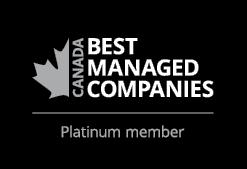The classic 80s song, “Should I Stay or Should I Go” by The Clash, reflects the internal dilemma many Canadians in the labour market are currently facing: “should I remain with my current employer, or take a chance on an opportunity at a new company?”
The current war on talent has significantly disrupted the stability of the Canadian workforce, with BNN Bloomberg reporting in January 2022, “According to Statistics Canada, the number of job vacancies across all sectors reached an all-time high in the third quarter of 2021, up over 62 percent from a year earlier. And that’s leaving employers scrambling to fill critical jobs and giving job seekers the upper hand amid a war for talent.”1
As employers consider new approaches for attracting new talent and retaining their existing workforce, they may find that not every employee understands how to assess the actual cost of joining a different organization. While salary and remote work are often top of mind for employees, comparing the differences in group benefits and retirement savings plans between employers can be more challenging.
When considering a new role at a different organization, there are several considerations from a benefits and retirement savings perspective that an employee should consider before making a switch.
The hidden risks of switching companies
It’s critical for employers to communicate the full spectrum of benefits available to their employees, to help them understand the risks of switching to a new company. Through proactive education, plan sponsors can facilitate a more robust understanding of the benefits and retirement savings plans they offer.
Eligibility waiting period
In many cases, organizations require employees to wait three months or longer before enrolling in a group benefits plan, leaving the employee and their family temporarily uninsured. Depending on the company, the employee may also be required to wait before taking advantage of an employer-sponsored retirement plan and related investment growth.
Customized, flexible plans for today’s diverse workforce.
Tenure-based benefits
Employees may receive less vacation entitlement at a new company depending on the employment offer. Vacation time is often based on tenure and could be reset upon changing employers. Additionally, tenure-based disability benefits often reset at a new organization; employees could experience a potential loss of income if they become ill or disabled, as they’ll be moved into the lowest benefit level in the salary continuation payout scale.
Prescription drug coverage
Group benefits plans can differ dramatically in the coverage they offer for prescription drugs, and several factors could result in a net cost to employees. Be sure to provide clear, easily accessible information on every facet of your plan’s drug coverage so that employees understand the potential costs of switching employers. For example:
- If the employee (or a family member) uses a specialty drug that requires prior authorization under their existing plan, they will be required to apply again under the new employer’s plan, with no guarantee of approval; this could potentially result in reduced or eliminated coverage for the drug
- If your plan is reimbursing an employee for a brand name drug, they may not be guaranteed the same coverage for the brand name under a new employer’s plan; if the new plan has a generic drug requirement, this may result in a change to the prescription or an additional expense to the employee, should they choose to remain on the brand name drug
- If the employee (or a family member) is on a biologic drug and joins a company with a biosimilar plan (predominantly in British Columbia, Alberta, New Brunswick, and Quebec), the only medications covered for certain conditions are biosimilars; this would require a radical change in the individual’s medication protocol
- The new employer’s drug reimbursement may compare unfavourably with the employee’s current plan, especially if your plan provides 100% or unlimited drug coverage; many plans have annual drug maximums and offer less than 100% reimbursement, potentially resulting in high out-of-pocket costs to the employee
Level of benefits coverage
When switching to a new company, employees should assess whether a new plan is as comprehensive as their current group benefits. Some differences between plans may add up to more paid out of pocket by the employee, such as:
- Lower benefit maximums
- Higher benefit co-pays
- Gaps in coverage or uncovered benefits on the new plan
Long-term disability claim eligibility
Switching employers can have complex implications for future long-term disability (LTD) claims, and it’s critical to make sure your employees have the available information to ensure they understand the benefits and workings of your LTD plan.
All LTD plans include an exclusion for pre-existing conditions, typically in effect during the first 12 months of coverage. A pre-existing condition is generally defined as any injury or illness for which the employee received a drug prescription or treatment from a physician up to 90 days before the coverage takes effect. This means that if an employee switches companies and then needs to make an LTD claim connected to a pre-existing condition, their claim may be denied, resulting in no income for an indefinite period.
Benefit plan contributions
In many companies, the premiums for a group benefits plan are partially or fully covered by the employer. When switching companies, an employee should be aware of how much their contribution will change under a new plan, as employee contributions to their group benefits premiums can add up over the months.
Retirement and savings plan contributions
Under a new company, employees should understand how a job switch affects their long-term retirement savings goals. For example:
- The new employer may not have a retirement savings plan at all
- The type and flexibility of the plan offered may be different
- An employee’s requirement to contribute to get a matching employer contribution may be higher
- The employer contribution may be lower
In each case, these scenarios could result in the employee saving less over time.
Investment options and costs
The investment management fee (IMF), or the expense the employee is charged for investing, depends on several factors; this fee could increase upon moving to a new employer, reducing overall net investment returns. In addition, the new employer may not offer the same investment options as the current organization, such as Environmental, Social, and Governance (ESG) integrated funds or Shariah funds. Employees should assess both options and costs when considering a move to a new company.
Financial literacy and wellness support
Many employees don’t realize that one-on-one financial literacy and wellness coaching is available to them through their employer’s programs. They may fail to assess the value of this benefit when moving to an organization that may not offer the same level of support.
Ancillary benefits
Employers often offer additional benefits to their compensation packages that reflect the organization’s values and vision. This can vary drastically between organizations, and employees should consider the ancillary benefits available to them at their current company before jumping to a new employer. Examples of such benefits could include:
- Employee and Family Assistance Programs (EFAP)
- Virtual health care tools and programs
- Health care and personal spending accounts
- Optional benefits
- Mental health and wellness programs
- Maternity top-up benefits
- Corporate discount programs
Educating employees on your full range of benefits
Switching to a new company involves many uncertainties, and the potential cost of switching to a new benefits and retirement program is a major variable that employees should consider. It’s critical to educate your employees about the offerings and advantages of the programs you provide to help them better understand the inherent risks of moving to a new program. By effectively and consistently communicating the value of your benefits and retirement savings plans, you can demonstrate your investment in the physical, mental, and financial health of your employees and their families.
Cowan can help with educating your workforce on the benefits available to them, to ensure they’re taking full advantage.
Sources
- It's wild out there': Employees gain upper hand amid war for talent. BNN Bloomberg. Retrieved from URL. ↵






